What are the best-starting seeds in an unheated Greenhouse? We’ll advise you on starting seeds in a greenhouse without heat here. If you want to grow plants all year round in an unheated greenhouse, this is how you do it.
Germination is the start of life for every plant. It is the process by which a seed or spore transforms into a seedling.
Seed germination requires several conditions, including water, air, and warmth. These factors will, however, vary depending on the type of seed you want to grow.
For some seeds to start germination, they must be exposed to light. However, some seeds will also germinate in total darkness. And, with the right conditions, the germination process includes three distinct stages, as we will see in a bit.
However, today, we delve more into germination in a greenhouse, especially an unheated one. Which are the best-starting seeds in an unheated greenhouse? What do you need to do to get the best results?
Best-Of by Category
| Category | Product |
|---|---|
| Seed for Early Planting | Spinach Winter Giant Seeds |
| Seed for High Humidity | Cayenne Pepper Seeds |
| For Low Maintenance | Oregano Italian Seeds |
| Accessory for Germination Enhancement | MET certified Seedling Heat Mat |
Best Starting Seeds in an Unheated Greenhouse

Before getting into the ideal starting seeds for an unheated greenhouse, we must first understand how these seeds germinate.
What takes place when you provide those seeds with the ideal conditions?
Seeds Germination Stages
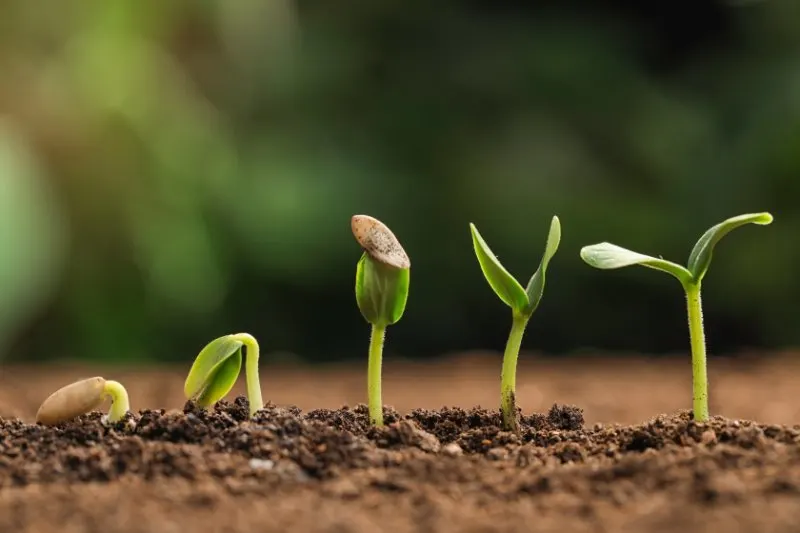
Imbibition
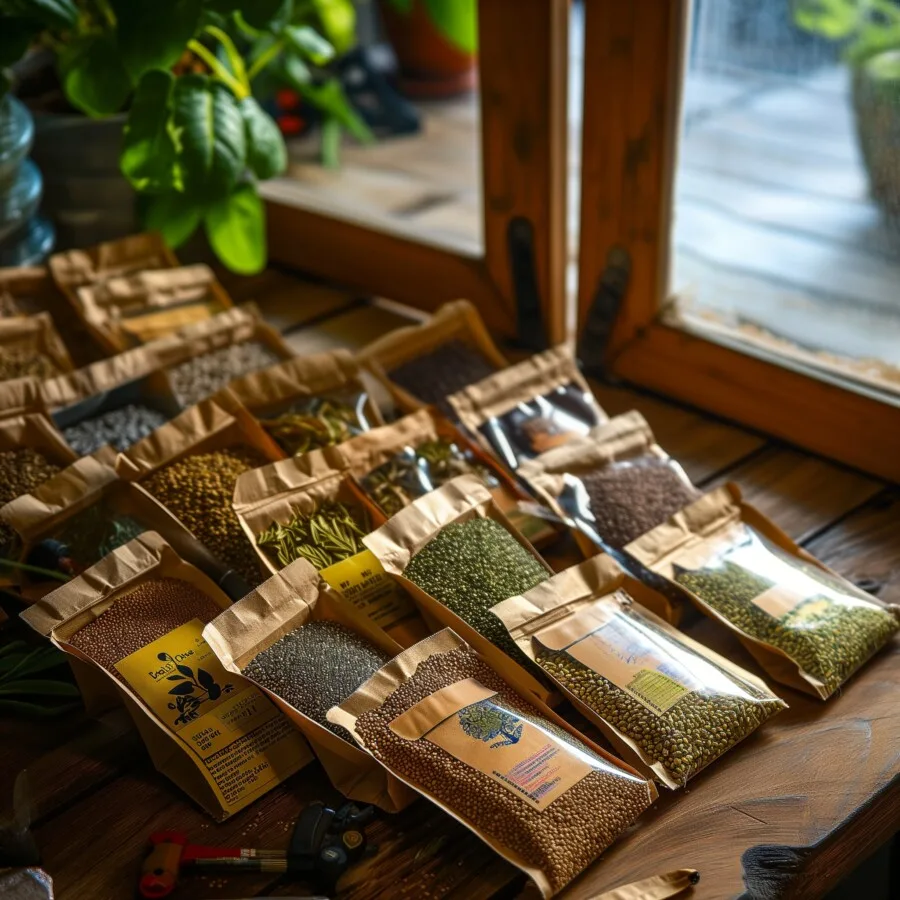
This is the first seed germination stage. Here, the dry seeds absorb water, one of the factors necessary for germination. As the cell wall and cells of the seed absorb the water, the seed swells. This swelling will burst the seed coat, enabling the radicle’s emergence.
Lag phase
Water and oxygen easily reach the embryo cells when the seed coating softens. This initiates a metabolic activity, which makes the cells start enlarging.
Cell respiration commences, and the seed begins to synthesize proteins. To accomplish this activity, the seed will begin to digest the nutrients deposited inside the seed coat during dormancy. That completes the second germination stage.
Radicle emergence
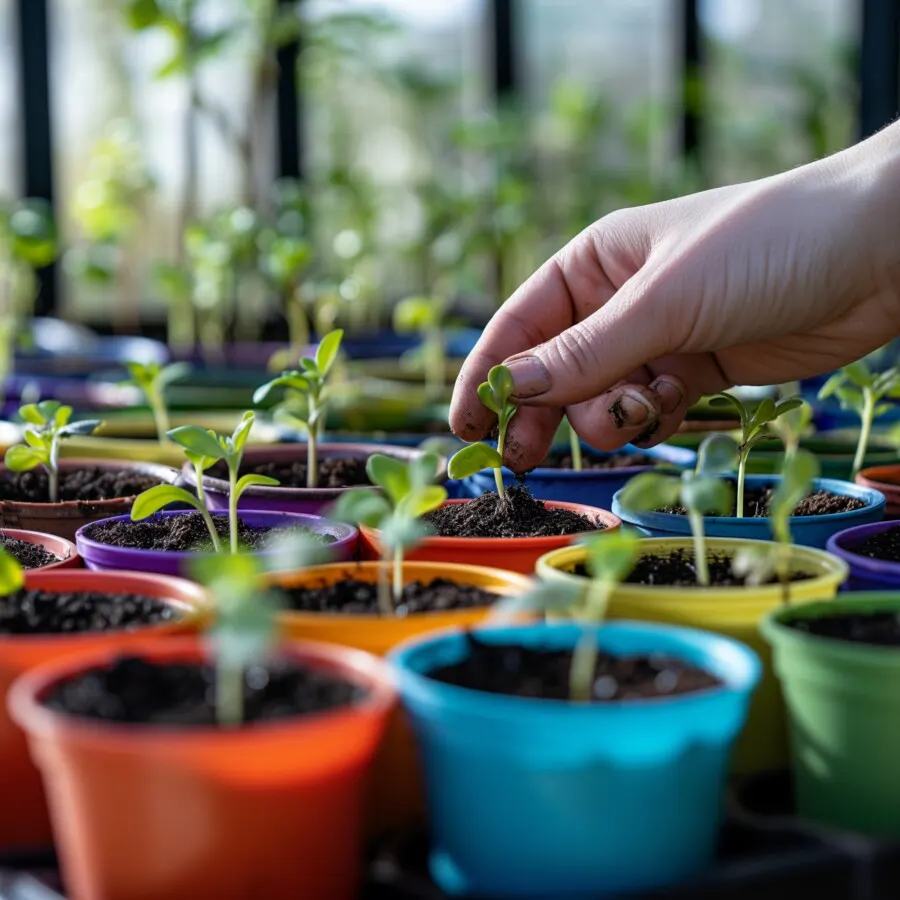
This is the third and final stage of germination. Here, the seeds will take in more water, increasing their weight. As the coat soaks with more water, it eventually breaks, and a radicle (primary root) emerges, growing downwards towards the water source.
From here, a plumule (shoot) also emerges on the opposite side of the radicle. Instead of following the water, the plumule follows the light source and grows upwards.
We can determine the best-starting seeds in an unheated greenhouse with that knowledge. As mentioned earlier, seeds need warmth to germinate effectively. So, how will you be able to grow seeds in an unheated greenhouse?
Well, first things first. Since heat is an essential germination factor, let’s see how much different seeds will require to germinate.
See Related: Best Erosion Control Blankets to Buy
Optimal Seeds Germination Temperatures
|
Seed types | Minimum Temperature (F) | Optimum Temperature (F) | Maximum Temperature (F) |
| Onion | 35 | 75 | 95 |
| Spinach | 35 | 70 | 85 |
| Lettuce | 35 | 75 | 85 |
| Cabbage | 40 | 85 | 100 |
| Beet | 40 | 85 | 85 |
| Parsley | 40 | 75 | 90 |
| Cucumber | 60 | 95 | 105 |
| Pepper | 60 | 85 | 95 |
| Pumpkin | 60 | 90 | 100 |
| Melons | 60 | 90 | 100 |
Proper temperature and humidity are vital to healthy seedling development. While seeds germinate in minimum warmth, the process will be slow. Only at optimum temperature will the seeds germinate rapidly. But, if the temperatures are too high, this will also negatively affect the process.
Ideally, the optimal temperature range for most seeds to germinate is between 65°F and 86 °F. However, greenhouse owners encounter temperature variations, which might affect the germination process. For instance, temperatures are mostly low at night but soar up during the day.
Consistency is essential for all plants, especially seedlings. Many gardeners opt for a humidity dome over their seedling trays even though it is unnecessary. In general, seedlings prefer a higher humidity level than the surrounding air.
Using humidity domes is a cheap and easy approach to keeping the air humid for the plants. Heat mats and humidity domes both contribute to consistent atmospheric conditions. This will ensure a higher germination success.
See Related: Most Rare Flowers from Around the World
What is an Unheated Greenhouse?
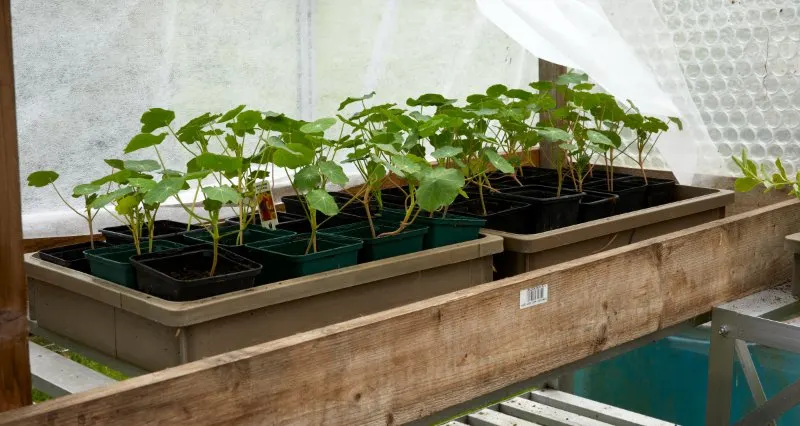
This is a type of greenhouse that’s heated by the sun. This means that its heat source also goes down when the sun is down. However, this greenhouse, also known as a cold greenhouse, is designed to trap warmth during the day, keeping your plants warm during cold nights.
The only challenge comes when the temperatures go too low, especially during winter nights – although the greenhouse can maintain an environment much warmer than the outside.
Generally, temperatures inside an unheated greenhouse differ from outside, with around 7°F. For example, when the outside temperatures are around 20°F (-7°C), it’s around 28°F (-2°C) inside the greenhouse. This means that the greenhouse is approximately 8°F warmer than the outside.
For this reason, understanding the optimal germination temperatures is crucial when figuring out the best seeds to start within a greenhouse. This way, you also know whether it’s necessary to heat the greenhouse if the temperatures go too low.
See Related: Best Glass Greenhouses in 2023
Tips on Using an Unheated Greenhouse
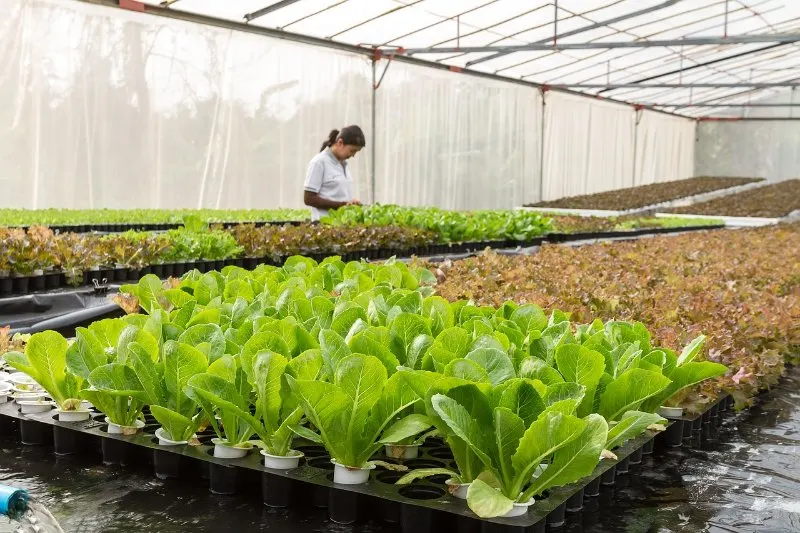
When growing plants in an unheated greenhouse, you might need to consider a few things, unlike in a normal heat-regulated greenhouse. For instance, the types of starting seeds ideal for your greenhouse should never be overlooked.
If you plan to start growing your plants in cold weather, the experts always advise using cool-season plants. These are plants whose seeds will germinate even in cold temperatures. Remember, different plant seeds will germinate at different temperatures.
This means identifying the ideal starting seeds for that cold weather, considering the greenhouse is unheated and warmth from the sun is at its minimum, is crucial.
Depending on the type of unheated greenhouse structure you own, you can plant your seeds through either of these two options: trays and grounds.
Note: Prepping the soil to the right temperatures is necessary when sowing the seeds directly into the ground. You can do this by positioning your cold greenhouse facing the sunrise about a week before sowing the seeds. This allows the greenhouse to absorb warmth from the morning sun, bringing the soil’s temperatures to optimal germination levels.
On the other hand, for warm-season plants, sow them approximately 1-2 weeks before your area’s average last frost date.
As for the trays, ensure you have the right ones for the job. You can buy high-quality ones from Amazon, such as the 10-Pack Starter Trays, which are humidity adjustable, or the 5-set Seed Tray Kits that offer 40 seed planting cells per tray.
See Related: Best Outdoor Jobs | Careers to Consider for Outdoor Lovers
Important Tips for Growing Plants in an Unheated Greenhouse
- Depending on your climate zone’s winter temperatures, a greenhouse lets you sow seeds virtually anytime. Later, greenhouse-grown flowers, fruits, and vegetables can be “hardened off” for a smooth transition to your garden.
- Generally, you should sow seeds three times deeper than the seed’s diameter. The ideal conditions for germinating big seeds are a long furrow and sufficient spacing.
- Starting seeds in a greenhouse ensures consistent atmospheric conditions conducive to the growing seedlings.
- Using a medium and planting containers is very important when starting seeds in a greenhouse. Making or purchasing a seed starting mix specifically for seeds is crucial. For most seeds, regular potting soil is too dense and potent.
- Start seeds in a greenhouse if you want to start early in the growing season. To have plants ready for growth in the upcoming season, many horticulturists decide to start seeds indoors or in a greenhouse.
- When a seedling has grown its second set of true leaves, it must be transplanted from plug trays or peat pellets, which are excellent for starting seeds.
- First, ensure that the soil temperature is warm, or at least the minimum warmth required for germination if you intend to germinate seeds in an unheated greenhouse. By doing this, you can prevent germination issues for your plants.
- Different plants require different germination conditions. The soil temperature necessary for germination is the most important component of time.
- Regardless of the variety, you must use seed starting trays with enough drainage holes and saucers. The holes prevent water from becoming stuck for a very long time. In addition to keeping part of the moisture in the tray from evaporating, the saucer beneath stops unclean water from trickling in the wrong places. Thus, the soil can continue to be hydrated.
- For the developing seed, the plug cells in plug trays hold and keep more moisture and warmth, according to several experts, making them preferable to open trays. Additionally, seedlings can remain in plug trays longer without entangling their neighbors’ roots.
- Most seeds can be sown right out of the packet. Other kinds of seeds, however, might gain from extra care, whether to increase germination rates or hasten germination.
- In general, you should sow 2-3 seeds in each cell for each tray (unless you are buying fresh seeds from a firm you know and have ample space for many seedling trays).
- You can regulate the humidity and temperature needed for germinating and developing young seedlings in greenhouses. Due to this controlled atmosphere, you can start seeds in greenhouses anytime. However, you must start the seeds in greenhouses 6 to 8 weeks before your area’s last anticipated frost date if you are growing plants that you intend to transplant into gardens outside in the spring.
- You can supply heat to a seedling bed with the use of a heat mat, which aids in the germination process.
- Use humidity domes over your seedling trays to maintain consistent atmospheric conditions. You can also use plastic wrap to keep the soil moist. Seedlings prefer humidity more than ambient air.
- Avoid planting multiple seeds in a seedling tray cell as much as possible. This causes a less-than-desirable root structure that is tangled and difficult to separate.
- Timing is crucial, as it is with most things in life. You must remember to consider the typical final frost date for your area. You can find out which zone he or she inhabits by conducting a simple internet search or making a phone call to a nearby greenhouse.
See Related: Cheap Nursery Pots for Greenhouses & Gardening
Top Seeds for an Unheated Greenhouse
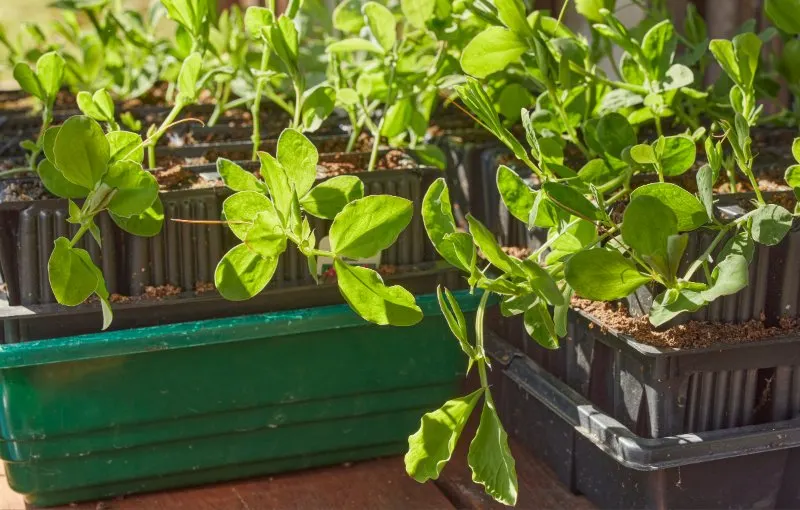
Deciding what to grow in an unheated greenhouse is not always easy, especially if it’s your first time. It’s not impossible to do greenhouse gardening even in cold weather and enjoy fresh produce.
If you yearn for fresh vegetables and herbs even during the cold winter, you can sow numerous starting seeds in your unheated greenhouse.
Generally, you have two types of plant seeds you can grow in your unheated greenhouse. These are categorized as cool and warm-season seeds. You must consider the plant varieties you’ll sow for each growing season.
During the cool season, seeds germinate and thrive at temperatures around 35°F- 40°F. On the other hand, the warm season plants do well at temperatures ranging from 70°F to 95°F.
If you are planting the cool season seeds, ensure you do so during the cool weather before it gets hot. However, even the cool season plants are categorized into hardy and semi–hardy subsets.
The hardy ones germinate in low-temperature soils, and their seedling can survive heavy frost. As for the semi-hardy ones, they will germinate in not-so-cool soils and withstand moderate to light frost. For this reason, these need to be planted around two weeks before your area’s last spring frost.
Ideal Plants to Grow in an Unheated Greenhouse
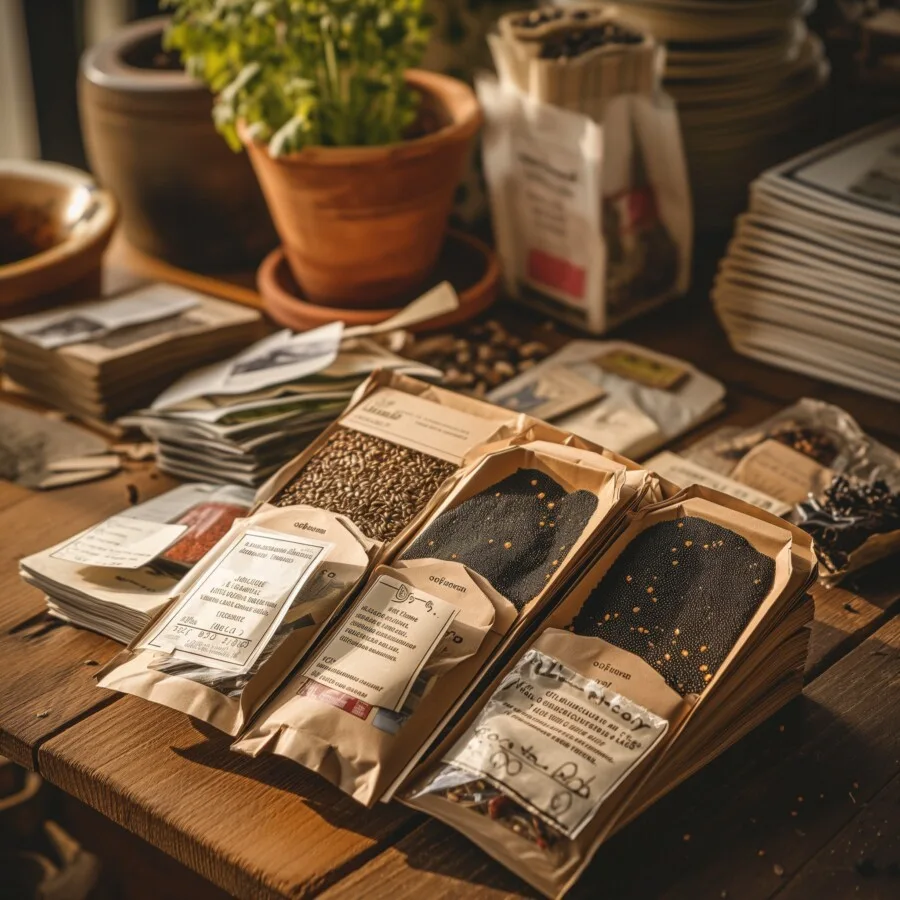
Any seed can be planted in an unheated greenhouse if it germinates well in lower climates. Since the inside of these buildings is cooler and more humid than the outside, they make the perfect wintertime atmosphere. Just be aware that as the seedlings grow, you might want to give them more shelter or even bring them inside if it gets cold outside.
Compared to more developed plants, young seedlings typically have a lower tolerance for cold temperatures. When the temperature within your greenhouse falls below 40°F, protect them.
Supplemental illumination will also be required if you don’t live in the southern portion of the US to start a wide variety of seeds. The young seedlings may not need it for germination, but they will need a lot of light to develop healthily and not get leggy.
You can also utilize your greenhouse to simply cold-stratify seeds during the winter. Wet the medium and place the seeds in an appropriate medium in a jar or resealable bag.
Do your study and be aware that different seeds have different requirements, such as how long you should leave them outside in cold weather and how frigid the temperatures need to be. You might need to put them in the refrigerator if it becomes warm outside.
See Related: Best Insulation for a Greenhouse
Carrots
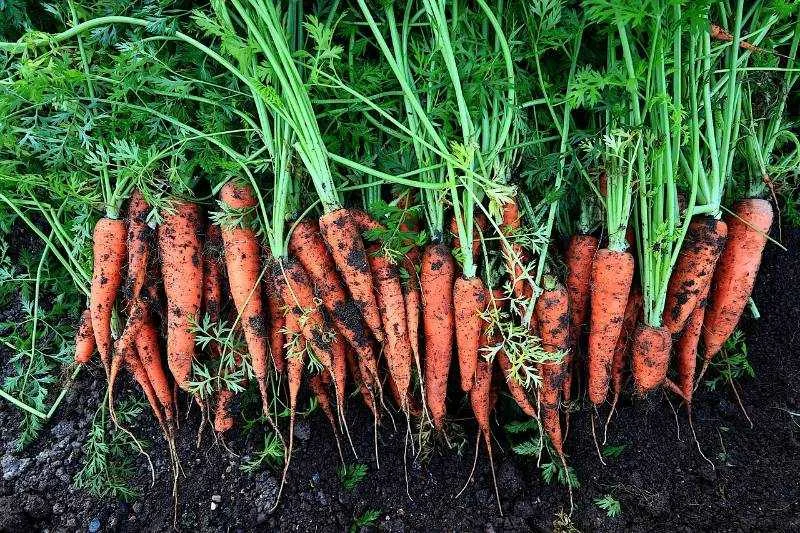
A heated and unheated greenhouse will provide them with enough heat for the growth of plants. Carrots will yield well at around 10°C if covered in a more sandy soil type and have access to plenty of nutrients.
Chard
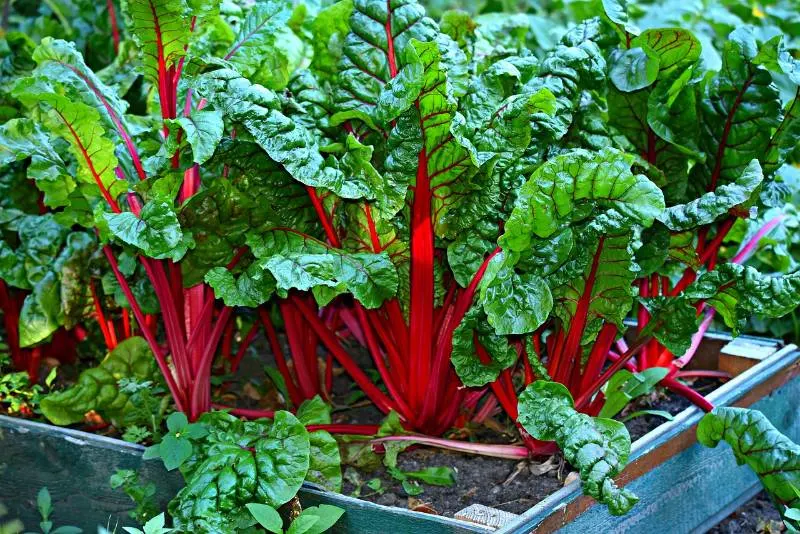
In most recipes, chard is a wonderful substitute for spinach because it is grown for its flavorful and nutrient-dense leaves, leafstalks, or petioles. It prefers chilly temperatures, although it can survive the summer without bolting. It is excellent for decorative plantings and edible landscaping because of its colorful petioles and leaves.
Kale

Kale is a non-heading, sturdy, and cold-tolerant green. It is one of the simpler brassica family members to grow. Kale can be grown in all or some shade. Nitrogen, phosphorus, and potassium should all be reasonably present in the soil.
For a summer crop, sow seed in the early spring; for a fall crop, sow seed in the late summer. Plants should be spaced 16 inches apart, watered consistently, and harvested during the growing season.
Broccoli
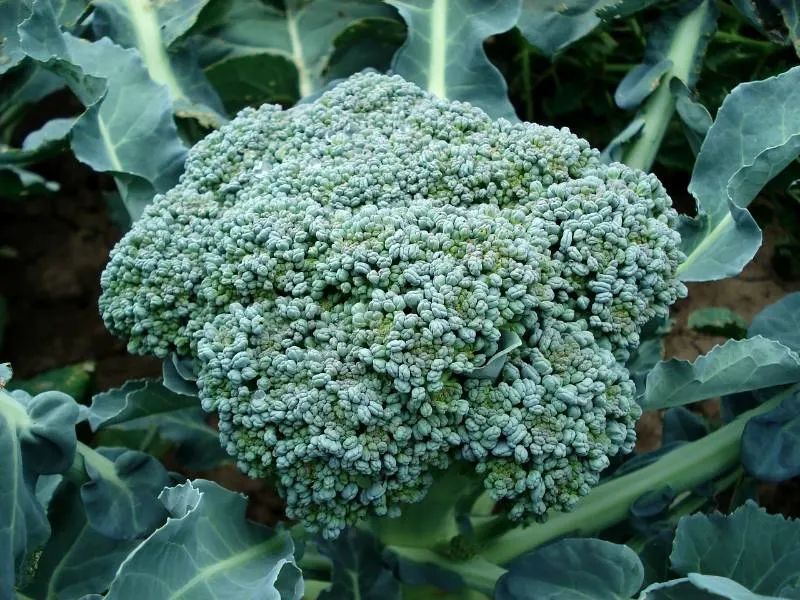
These cold-season veggies are sown in the early spring or late summer and are known as the green crown jewels. Broccoli should be planted in cold-frame greenhouses built to handle cool-season plants. It can produce one or two big crops and a number of smaller harvests each growing season.
Brussels sprouts
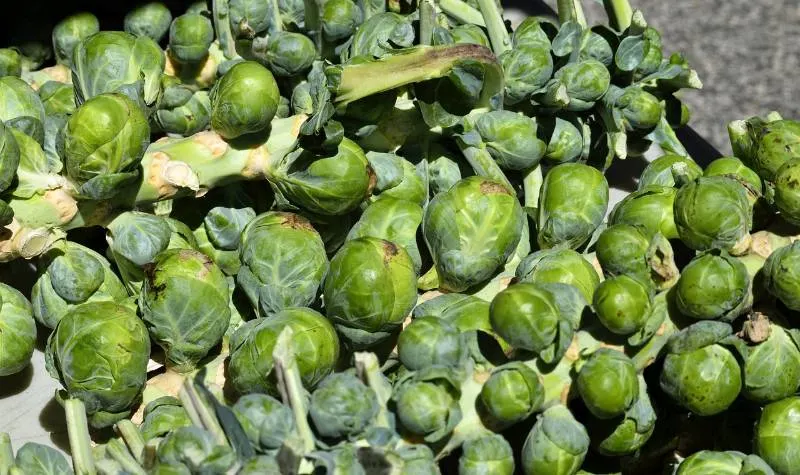
Growing Brussels sprouts might be a little challenging. The vegetation needs a long growing season. Additionally, they need rich soil with a lot of organic matter. They require constant wetness and despise heat. Brussels sprouts’ tall, top-heavy stems also need to be staked to keep them from toppling over.
Cold-climate gardeners usually never start with seeds for Brussels sprouts because of how long it takes for them to mature. Plan to plant the young seedlings in the garden as soon as the weather has stabilized and the last frost has passed. In warm climes, Brussels sprouts are occasionally sown in the early fall for a harvest in the late winter.
Cabbage
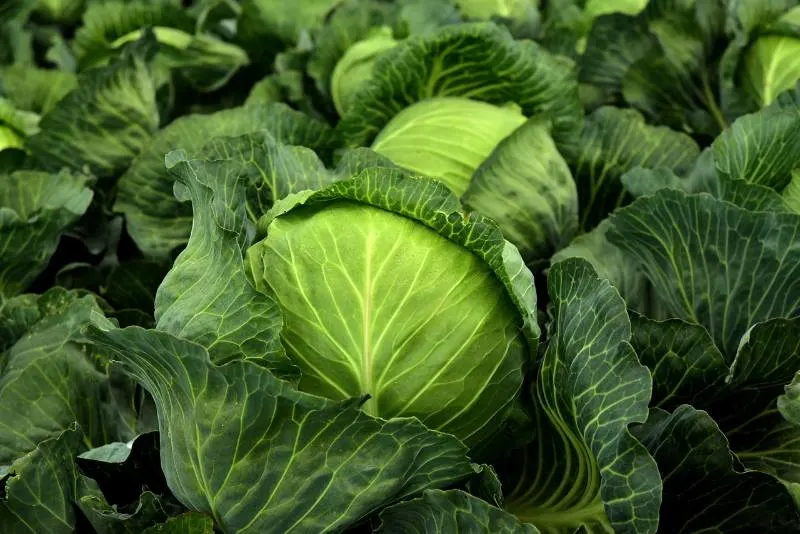
The cultivation of cabbage, commonly called headed cabbage and Brassica oleracea is ideal in greenhouses. Becoming a cool-season vegetable, it is perfect for the winter without overheating. The plants won’t be as affected by the colder environment’s modest light requirements as warm-season vegetable. Growing cabbage in a greenhouse is surprisingly easy, provided you feed the soil properly and take precautions against common pests.
Peas
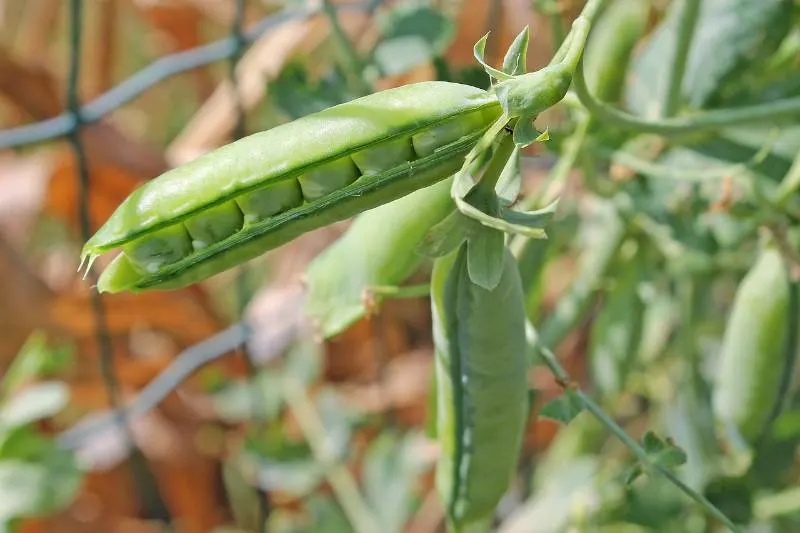
Peas are an ideal vegetable to raise in a winter greenhouse since they are a cool-season crop that performs well in chilly conditions. The two most popular types among the various variations are snap and snow. Snap peas are collected when the pod is full of ripe peas and have a crisp, rounded shell.
Snow peas are picked while they are starting to mature and are prized for their delicate, crisp pod. Both types have the same growing requirements and can be cultivated as bushes or trailing vines. Pea plants need at least six hours of direct sunlight each day and soil that drains well. Pea plants can thrive in a steady environment while being protected from insects and pests in a greenhouse.
Onions
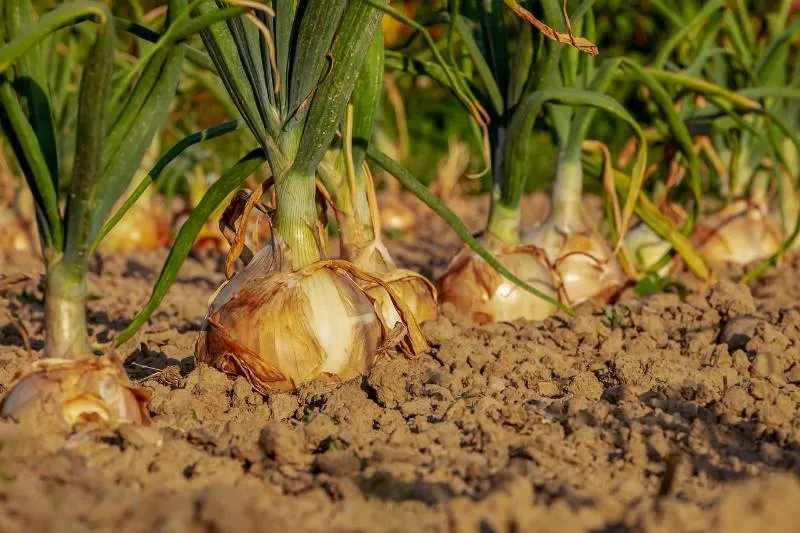
Growing high-quality onions within your greenhouse is a terrific option for many households. Onions are one of the most popular kitchen ingredients. Onions are a good first gardening project for beginners since they are reasonably simple to grow. Due to their durability, onions make the ideal spring plant, allowing you to enjoy delectable onions in the convenience of your home come summer.
Radishes
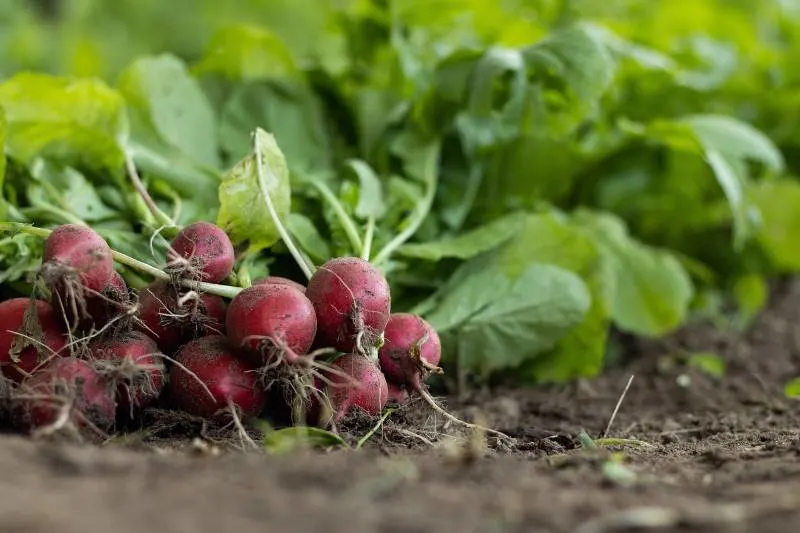
Radishes develop extremely quickly, sometimes only taking a few days. They are perfect for new and inexperienced gardeners in particular. Radishes can be easily grown in your greenhouse, even in the winter, without difficulty.
Radishes can be grown from seed in 4 weeks and are quick, simple, and enjoyable. These little plants are excellent gap fillers on the vegetable plot and may be cultivated in even the smallest gardens. Sow small amounts frequently to pick for a crisp tang to your salads this summer. Even kids for winter cropping exist.
Turnips
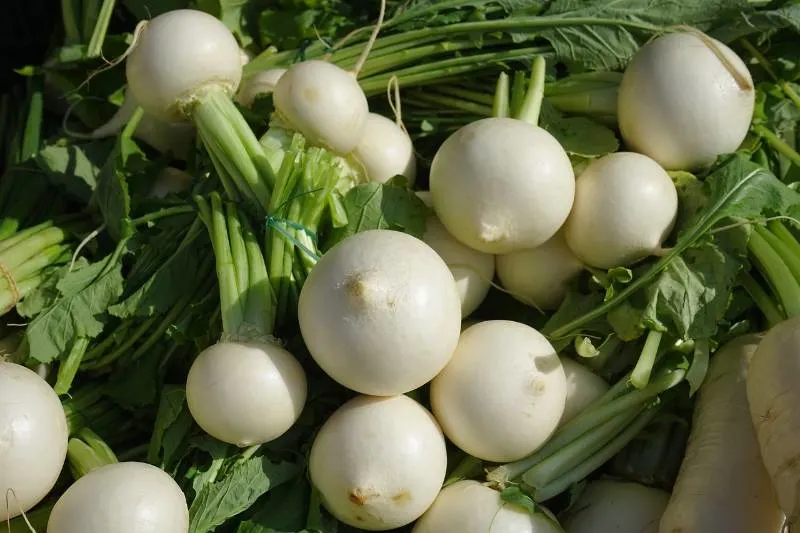
Turnips are a cool-season vegetable that can be cultivated both in the spring and the fall. They mature swiftly, and the roots, as well as the vibrant greens, can be savored. Discover more about the cultivation and harvesting of this traditional root vegetable.
Turnips can thrive in spring or fall but dislike the heat of the summer. (Take note that compared to a spring harvest, an autumn crop sown in the late summer is typically sweeter and more tender, and pests are less of an issue.)
Turnips do not transplant well; they are seeded straight into the garden. Additionally, they germinate quickly. Their greens can be harvested after a month, and the enlarged roots can be harvested after a second month.
Fuchsia
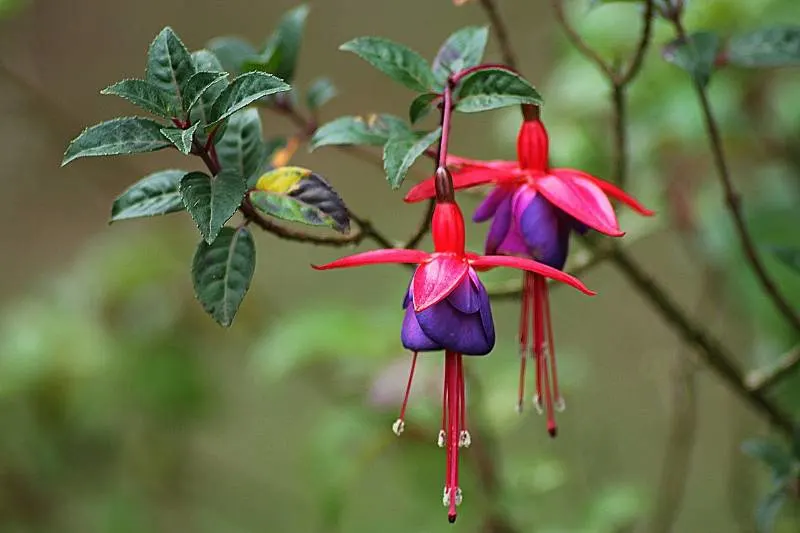
Fuchsias can survive the winter in any greenhouse, even one that isn’t heated. By being informed of your growth zone and the particular requirements, you can discover how to grow fuchsias in a greenhouse. Furthermore, while illnesses and pests in greenhouse fuchsias are a possibility, using the right techniques will help you swiftly prevent them.
Your ability to grow successful fuchsias in a greenhouse depends on your planning, persistence, and desire to master the techniques of the trade. You should select the cultivar that is best suited for your locality from the several that are available.
Bougainvillea
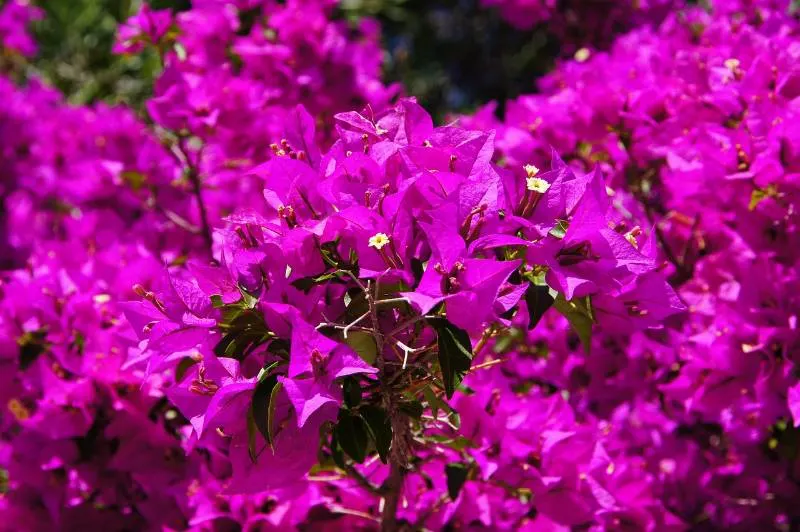
Bougainvillea needs circumstances without frost to grow. If the circumstances are ideal, bougainvilleas can produce numerous flushes of bloom over several months.
A perennial tropical vine with blooms is called bougainvillea. Additionally, due to its tropical nature, it is not cold-tolerant and won’t endure frost or severe freezes in the fall or winter. For newer, less firmly established plants, this is particularly true.
Marigold
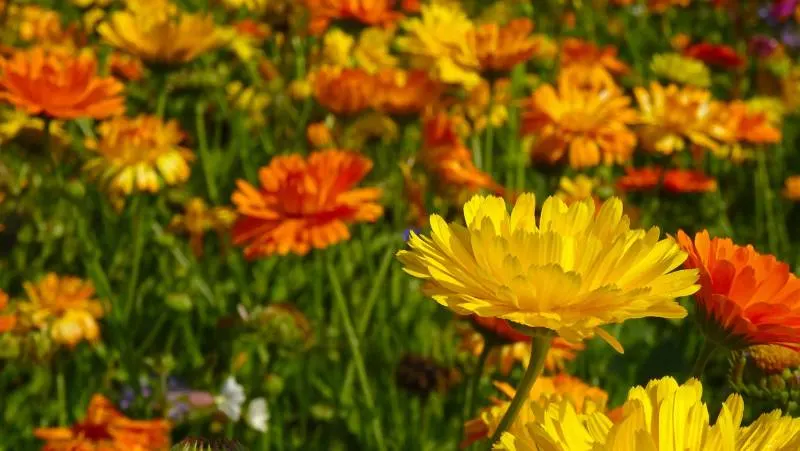
Suppose you want your gardens to shine in the early summer. They can be started off indoors, possibly in a greenhouse. When there is no longer a chance of frosting, move it outside.
It typically blooms 45 days after seeding and continues to bloom until the next frost. Six to eight weeks prior to the typical first frost date, you can start cultivating the seeds in a greenhouse. They will get a head start if you let them grow indoors before putting them outside.
See Related: Best Backyard Shed Ideas
Hardy Starting Seeds in an Unheated Greenhouse
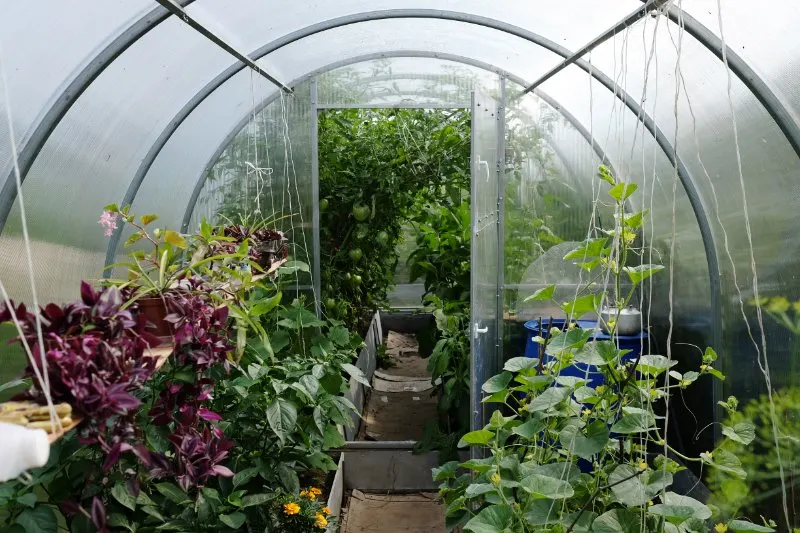
Here are some examples of hardy seeds that you can grow during the cold season.
Leafy Greens
- Collard
- Endive
- Cabbage
- Mustard greens
- Radicchio
- Swiss chard
- Kale
- Spinach
- Arugula
Vegetables
- Onions
- Coriander
- Asparagus
- Cabbage
- Brocolli
- Beetroot
- Silverbeet
- Snow peas
- Peas
- Celery
- Cauliflower
- Carrots
- Radishes
- Garlic
These plants are strong enough for the cold weather, and you can easily find some in Amazon, like the Green Arrow Peas.
Hardy Flowers
- Chrysanthemum
- Snowdrop
- Calendula
- Pansies
- Winter heather
- Cyclamen
- Mahonia
- Winter clematis
- Daphne
- Winter aconites
Hardy Perennial Herbs
- Parsley
- Thyme
- Lavender
- Chives
- Fennel
- Mint
- Coriander
- Tarragon
- Garlic bulbs
- Chicory
- Chervil
- Rosemary
All these represent some of the best seeds for an unheated greenhouse, which will thrive in cold weather. This means you need not worry about the approaching cold season. You can still grow various crops in your unheated greenhouse without minding the frost.
See Related: Best Paint for Greenhouses
Benefits of Greenhouses
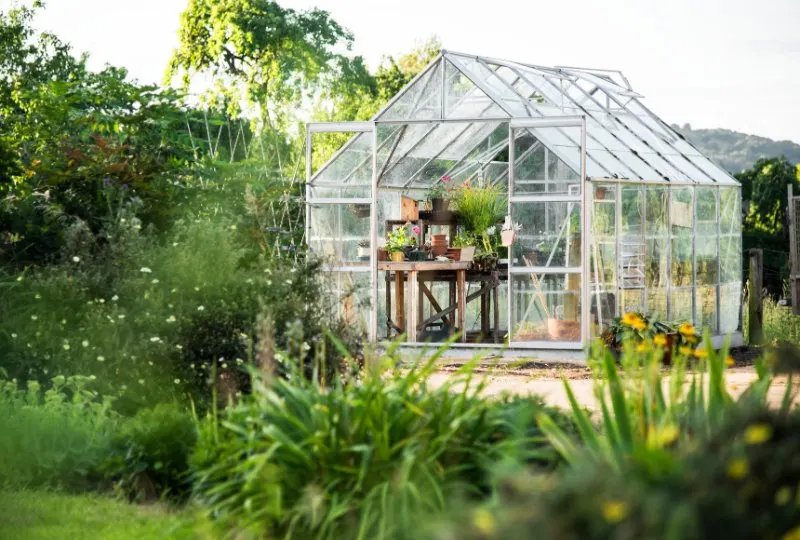
Protection against Harsh Weather
Without greenhouses, it would be impossible to grow most plants during extreme weather. With a greenhouse, your plants are always protected against scorching heat or freezing winter temperatures. This way, you can continue enjoying fresh indoor or backyard garden produce, even in the worst weather.
It also means that there is not a single time you won’t have fresh crops from your garden – be it in January or December.
Do all your Gardening in a Single Place
Depending on the size of your greenhouse, you can grow all your crops in a single location. This allows your crops to grow uniformly, and you can manage them better. And, no matter the type of plants, a greenhouse ensures that they receive ideal conditions for optimal growth.
As for the larger greenhouses, they can even act as your tools storage room.
Protection against Pests
Pests can be a nuisance and ruin even the most stunning indoor or outdoor garden. However, with the right greenhouse, you won’t have to worry about them destroying your plants anymore.
Since it’s an enclosed structure, controlling pests and providing a thriving sanctuary for your plants is easier. The structure also comes in handy to protect the plants against various insects and birds that might harm their plants.
Grow any Plant Type.
While some small indoor greenhouses might limit you to the types of crops you grow, larger outdoor ones do the opposite. They allow you to grow various plants, depending on what you want.
Whether you wish to grow vegetables, flowers, herbs, perennial crops, or fruits, these structures make it possible. You won’t have to be restricted to vegetables and flowers only, but rather a whole spectrum of amazing crops.
All you need to do is understand the conditions for the different crops to ensure optimal production. You can grow your crops simultaneously or grow different ones at different times of the year.
When can I plant inside an unheated greenhouse?
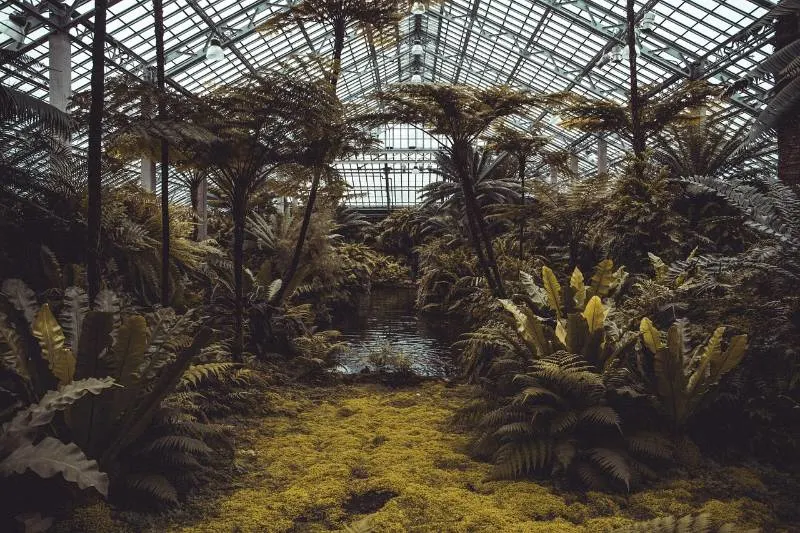
For normal crops that aren’t cold hardy, anything you plant must be ready to harvest before daylight hours fall below nine a day and frost becomes common in your area.
Some people may need to start uprooting plants in late October, while others may need to start in December. Check your seed packages and count backward from your first hard freeze for the days required for maturation. You’ll need to plant at that time.
Warm-season plants, including tomato, pepper, corn, beans, and squash, fall under this category. Other plants that can withstand cold temperatures can be sown in October or November, and you’ll still have a harvest. Many people will survive the entire winter in an unheated greenhouse without problems.
When potting up garden plants, do it about a month before bringing them into your greenhouse shelter. This will give them time to adapt and establish themselves.
How to Start with Seed in an Unheated Greenhouse (Unheated)
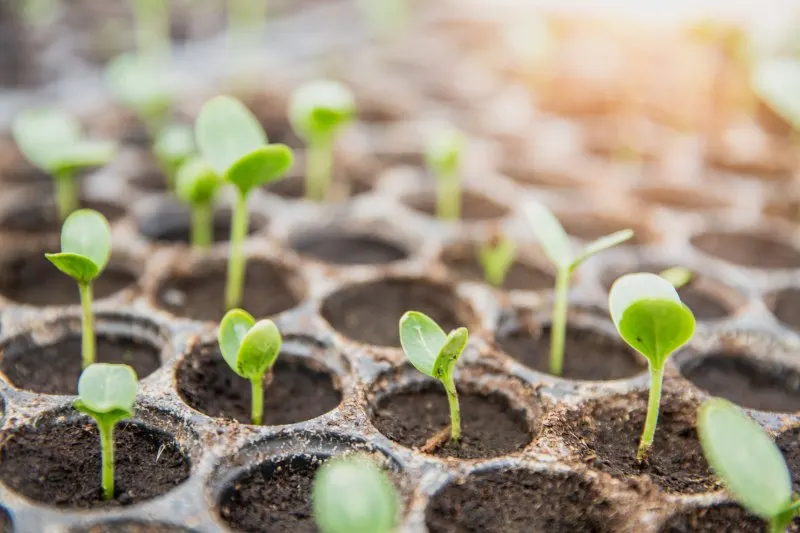
The cooler months are ideal for growing seeds if you’re interested. Early spring and late winter are the best periods to plant seeds because cooler regions tend to produce germination. Start seeds of cold-sensitive plants about two months before your area’s last expected frost date. These cold-sensitive plants require warmer temperatures, so starting late is favorable.
A greenhouse in the ideal location will help prepare the soil for growing directly from the ground. It is ideal to do this about two weeks before planting, in direct sunshine early in the morning. The optimal time to begin planting warm-season plants in the ground is one to two weeks before the last frost dates.
Starting seeds in a greenhouse is usually done in open seed trays or plug trays. You must prepare your seeds according to their needs. You may find instructions in seed packets along with the seeds you bought.
We’ve got your back if you’re unsure what to do on seed preparation on seed-starting trays. Here is a guide on how to start seeds in a greenhouse using seed-starting trays.
How to Use Seed Starting Trays to Start Seeds in a Greenhouse
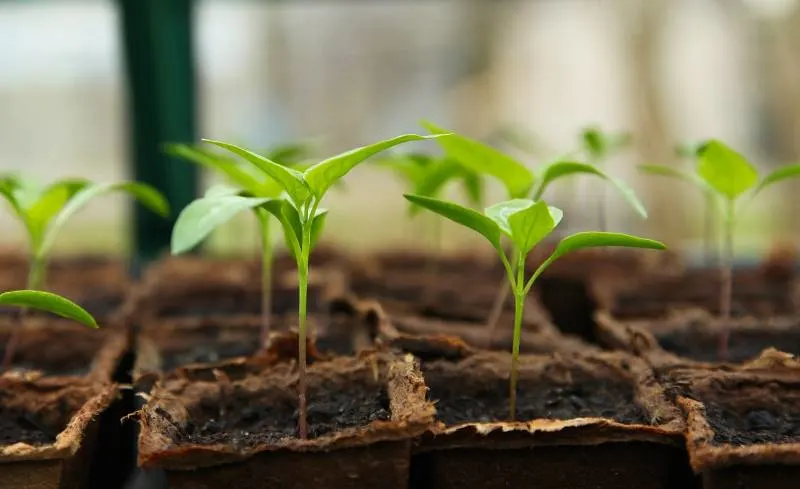
Before we dig into this guide on starting seeds in a greenhouse using seed starting trays, ensure you have a seed starting mix. You can buy seed starting mix in stores or online. It’s a sterile substitute for potting soil that will aid seed germination. Regular potting soil might not be favorable for germination because of its weight and contents. So remember, use seed starting mix instead of regular potting soil!
You can also make your seed-starting medium using coco coir (or peat moss), vermiculite, perlite (or pumice), and garden lime (if you used peat moss). Just mix eight parts of the coco coir or peat moss with the other pieces of equipment, and there you have your seed starting mix.
1. Put seed starting medium into each cell. A seed starting medium should fill each cell. Overfilling is alright because the mixture will continue to set after becoming moist. However, it’s best if you avoid overfilling the seedling trays.
Use a watering can to moisten the seed starting medium. Ensure the mixture or soil is moist by sticking your finger to your first knuckle. Extra water ought to drain to the tray that is under your cells.
2. Check if the seeds are viable. To check if old seeds are still alive, submerge them in water for 15 minutes. If you plan to plant some old seed packs, check to see if the seeds are still viable for growth. Some seeds have an extended shelf life, while others have a shorter one. Any seeds that float are probably not going to germinate. The seeds should be good to plant even if they sink.
Alternatively, you can test the germination of at least ten seeds by wrapping them in a damp towel. For ten days, store the paper towels in a warm location with a sealable plastic bag. Verify the seeds to see if they have sprouted or germinated. The remaining seeds ought to germinate if five or more do.
If you have fresh seeds, you can skip checking their viability. But it doesn’t hurt to check, either.
3. Put holes into the soil surface. With your finger, make a 6.4 mm deep hole in each cell. The measurement doesn’t have to be exact. Therefore, a decent estimate is the length of a fingernail. Be cautious when pressing to avoid compacting the soil.
Follow the directions on the seed packets for each plant to determine whether to place some seeds shallower or deeper.
4. Sow seeds into the cell holes. Place two seeds or more in each opening. This makes it more likely that at least one seed will grow in each cell. You can always prune back or get rid of the plant that appears to be weakest if both seeds begin to sprout.
Suppose the seeds are tiny; plant 4 of them. More opportunities for growth result from this. When working with little seeds, pour them into the fold of a piece of paper that has been folded, and then use a pen to press the seeds into the holes.
Some gardeners, however, recommend planting only one seed. According to them, planting multiple seeds creates a less desirable root structure. It also makes separating the seedlings more difficult. For instance, if you put three tomato seeds and two sprouts in a cell, you must remove the other.
With your finger, press the seed-starting mixture onto the seeds. This makes the beginning mixture completely in contact with the seed. As you press down, be gentle. You only want to compact the soil closer and not press the seed in any deeper.
5. Put the label onto the seed trays. If you plant multiple types of seeds, label the containers. But what is sprouting in the cells and the day you planted them on the labels you made for your plants’ gardens? Attach the labels to each row’s end.
6. Wrap some plastic wrap around the tray. An atmosphere that is humid and conducive to germination will be created in the tray with the help of plastic wrap. Leave tiny gaps on the tray’s sides so oxygen can still reach your seeds.
For the same result, you can also get a humidity dome from a gardening supply store. They help maintain consistent atmospheric conditions in your seed trays. Humidity domes maintain higher humidity and are inexpensive. Keep the air vent on the dome open to allow for airflow.
7. Put water on the tray under your seed tray. 13 mm of distilled water should be added to the flat tray. You do not need to water the seeds from the top because the cells will absorb water from the tray. Every day, check the water level in the tray.
If the water level is less than 1/8 inch (3.2 mm), refill the tray with water to a depth of 13 mm. Your seedling’s roots could become soggy and decay if you overfill the tray.
8. Keep the seed tray in a warm location. Although seeds don’t need to receive sunlight to grow, it won’t harm them either. Most plants need soil temperatures above 18 °C for effective germination. A soil thermometer, positioned at the same depth as the seeds, can measure the soil’s temperature.
Once the seedlings have emerged, uncover them and move the seedling trays to a sunny location. Take off the humidity cover or plastic wrap so your seedlings may fully absorb the light.
Turn your tray 180 degrees daily to prevent your seedlings from growing unevenly. To ensure equal growth, seedlings can also be kept in grow rooms.
See Related: Different Types of Ivy Plants (+ Examples)
Starting Seeds

1. Start at the right time. The ultimate goal is to have the seedlings ready to be planted when the weather is suitable. Reading the packet will inform you when to plant inside, so do that first. Some seed kinds germinate too quickly to start inside, making them best suited for starting outside. “Direct sow” will be indicated on these packs.
As long as the depth is 2-3″ and the bottom has drainage holes, practically any container can start seeds. Certain people prefer recycling materials like cartons, yogurt containers, and paper cups. Most people frequently utilize trays designed expressly for the germination of seeds.
In addition to the simplicity of mobility, trays are simple to fill and maintain regular moisture thanks to the watering system.
2. Get the seed starting mix ready. You should use a mix that is specifically designed for growing seedlings. It shouldn’t be recycled potting soil from indoor plants or outdoor soil. Start with a clean, fresh blend to ensure a disease-free and healthy seedling.
The planting mix should be slightly moistened but not completely submerged before adding soil to each compartment. Although crumbly, it shouldn’t be gloppy. There must be no holes, and the compartments must be packed tightly.
The majority of these mixtures lack fertilizer. Thus, the seedlings will require liquid fertilizer a few weeks after germination until they are ready to be transplanted.
3. Start the planting procedure. The depth at which the seed should be placed is specified on the seed packet. Larger seeds should typically be buried, whereas smaller seeds can usually be placed straight on the ground.
The seeds should be moistened using a mist sprayer or a small watering can. Cover the tray with plastic wrap or a dome to hasten germination. The seedlings will stay moist as a result. Remove the cover as soon as you notice anything green.
4. Give the plants water and nourishment. Misting the soil frequently during the growing season is necessary to keep it moist—but not drenched. It’s acceptable to let it partially dry in between water cycles.
The room where the seedlings are should have airflow from a fan to prevent illness. Read the liquid fertilizer’s instructions before feeding the seedlings.
5. Give the plants some light. Seedlings need a lot of light to grow. To keep the plants from slanting toward the sun, rotation is essential. Plants that receive insufficient light will be lean and frail.
Grow lights must be positioned a few centimeters above seedlings and scheduled to remain on for 15 hours daily since seedlings need darkness to relax. Increase the height of the lights as they get bigger.
6. Move the seedlings outdoors. Moving seedlings outside is a slow process known as ‘hardening off.’ A week before they go into the garden, they should be placed outside in a sheltered area that is partially shaded and far from any wind for a few hours. It is best to bring them in at night.
Expose them to additional sun and wind, then overnight over a week or ten days. They can now be set up in the garden.
Germinating Seeds in Unheated Greenhouses Using Other Materials
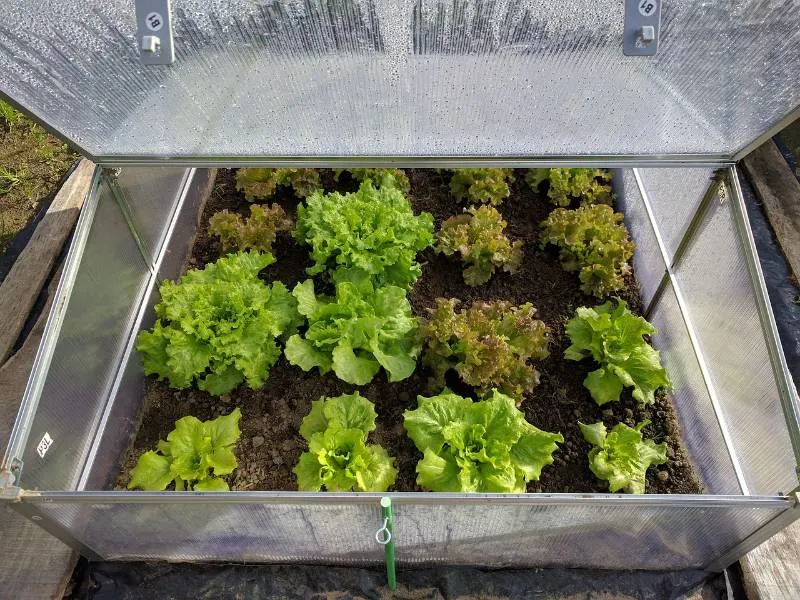
If you want to germinate seeds in an unheated greenhouse, you should first ensure that the soil temperature is warm (at least the minimum warmth necessary for germination). This will ensure that your plants don’t experience difficulties in germinating.
Here are a few ways to warm the soil:
- Heat Mat. Heat mats provide seeds with consistently warm temperatures. With this water-resistant mat, you can easily heat the soil in your greenhouse and maintain it at 10°F to 20°F, above the outside temperatures. One limitation of this mat is that it’s an 18-watt mat and is only ideal if your greenhouse has an electricity source.
- Heating Cables. These are 12- to 48-foot-long waterproof PVC cables that you can use to heat your soil. They will heat and maintain your greenhouse soil’s temperature between 70°F and 76°F, the ideal warmth for most seeds to germinate. It also requires electricity to operate. Check out our piece on the best solar heaters for more greenhouse heaters.
- Mini Greenhouse. If you have a large unheated greenhouse, you can buy a smaller greenhouse (heat-controlled), where you can first germinate the seeds. There are numerous online mini-greenhouse options that you can buy to facilitate your farming.
- Artificial Light Source. When starting seeds indoors or in greenhouses, many gardeners use artificial light sources. This light will keep your seedlings healthy and compact.
Maintenance of Plants in an Unheated Greenhouse
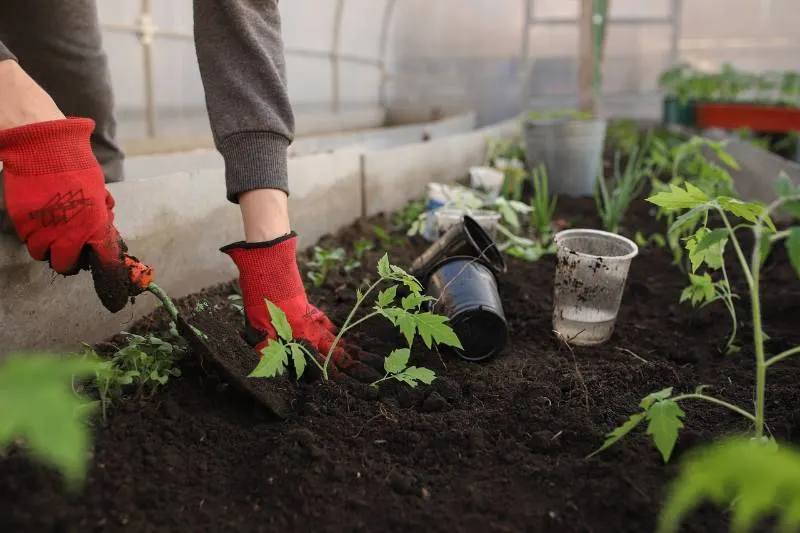
Summer crops require more maintenance than winter crops. If any pests or diseases exist, they tend to appear less frequently.
Due to their propensity for slower growth and the absence of heat to promote evaporation, plants also require less water. You should typically wait for one to two inches of soil above the surface to become completely dry between waterings, depending on the species.
If you’re beginning your seedlings in new soil, you won’t need to fertilize them. Avoid using manure, but use compost and mulch instead. It is too nutrient-rich and could cause plant burns.
If a plant dies back during the winter and is being kept indoors for additional protection from the outdoors, it should be clipped down to just above the soil line.
When snow piles, sweeping it off your structure will be your biggest task. Snow adds insulation but also covers the sun, which is bad for crops. To complete the task, a ladder and a brush can be used.
Additionally, watch for any signs of rodent infestation, such as chewed-up pots or leaves, as well as tipped-over pots and droppings. If you notice any signs of rodents, try to close up any openings in your building and use traps or repellents.
Fluctuating Temperatures

You should be aware of the extreme temperature swings that many regions can undergo in the winter and the summer while using an unheated greenhouse.
You have to pay close attention to the forecast. You may be experiencing your typical pleasant autumn days in the mid-fifties, but a sudden cold front will bring temperatures down to the twenties.
Give your plants some additional protection if a cold spell that will be unusually protracted or cold is predicted. Even when they are inside, frost can still harm them.
Plants should be covered with a blanket or frostcloth, and any pots should be insulated with cartons, blankets, or bubble wrap. Remember to remove the covers during daylight so the plants can receive light and lower the possibility of fungus infections.
It could be simplest to surround your plants with permanent rings, frames, or other support systems if you live in Zones 5 or 6. You can cover them outside when it gets cold outdoors without damaging the leaves.
To help insulate roots, add thick layers of mulch made of leaves or straw. Put your compost within the greenhouse if you intend to go further.
FAQ
What kind of plant seeds can I grow in an unheated greenhouse?
You can grow two types of plant seeds in an unheated greenhouse: cool-season seeds and warm-season seeds. Cool-season seeds germinate at almost freezing temperatures (1.6-4.44 Celsius). Warm-season plant seeds germinate at warmer temperatures, about 21-35 Celsius. Cold-sensitive plants are those that require warmer temperatures to grow. Examples of cold-sensitive plants are basil, pepper, and tomato.
How can I keep humidity inside the seed trays?
Buy humidity domes to regulate the humidity inside your seed trays. They are an inexpensive and simple way to ensure the humidity is kept for your seedlings. Get a dome that fits above your seedling tray.
Can you plant ahead of the growing season in an unheated greenhouse?
That is certainly possible. An unheated greenhouse can also start seedlings in the springtime or harden them off before they move outside. Additionally, you can cold-stratify seeds, grow new plants, and safeguard delicate perennials.
What are heat mats for?
Heat mats are for healthy seedling development. The primary purpose of heat mats is to gradually warm the soil, which promotes quicker germination and robust, healthy seedlings. They help in cutting germination. Although they serve the same purpose, heat mats are also sold as propagation mats and seedling heat mats.
When can I start ornamental flowers?
You can start seeds of ornamental flowers about 8-10 weeks before the predicted last frost date.
Related Resources
